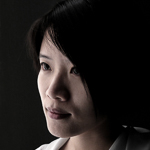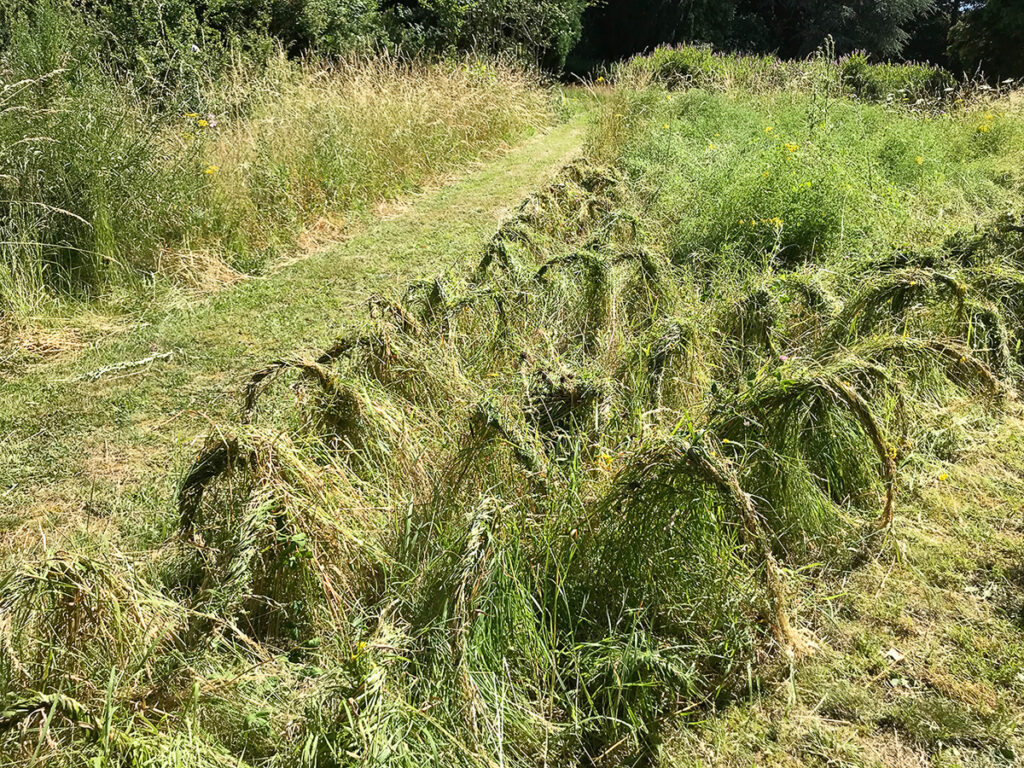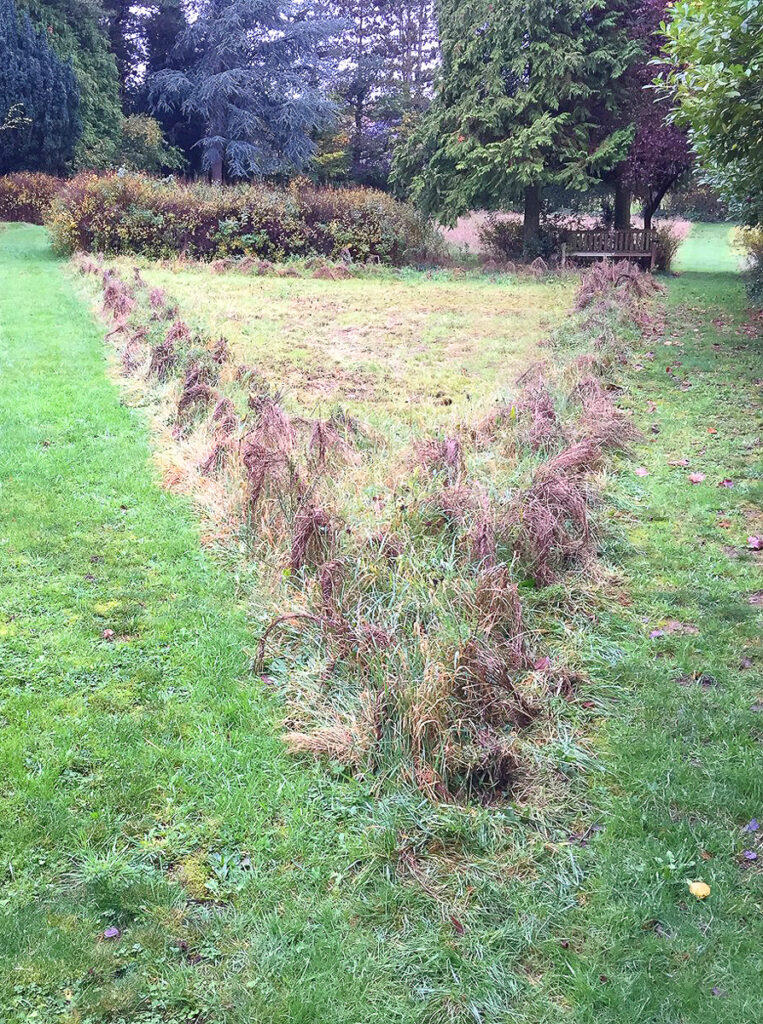
Yu-Fang Chi describes her Belgian residency when she applied her jewellery weaving technique to the land itself.
✿ How did the residency emerge?
The opportunity of making artwork Twist. Loop. came from the experience of residency at the estate Ravary in Trooz, Belgium in 2019. I was lucky to be selected as one of the finalists of the 2018 Marzee Graduate Prize, the prize comes with the unique experience to participate and meet the other winners in a sharing workshop. This professional program is run by Marie-José van den Hout, curator and owner of renowned Galerie Marzee.
✿ What gave you the idea of working with the land?
During this workshop, participants were encouraged to explore the possibilities and concepts of personal practice and to expand the artistic production. Through the open residency, we were able to examine and investigate different approaches. Some artists collected the rocks and tiles from the surrounding area and ground them into pigments. Some people applied the wallpapers and patterns from the debris of old building to their work. Some cut glass wine bottles from daily life and reassembled them into contemporary jewellery. And so on.
When I encountered the beautiful scene of Ravary, I was stunned by the amazing natural elements around the estate. I was thinking… How to record the specific beauty of the land? How to remember the unique memory and experience of living and making artwork with other artists in this forest? That is where the idea came from.
✿ Can you describe the process of weaving the grass?
The beautiful estate is hosted by a wonderful lady, a friend of Gallery Marzee, who shared the unique place with the group of artists. Her kindness, generosity and openness make the project come true. During my time in Ravary, I came to her and inquired if there is any space that I could possibly work within the estate. “I would like to explore my practice, not in the building or studio, but also in the natural environment, in the garden, forest, tree, or bush.” With her generous and kind support, I was able to work with the land.
In the beginning, I was thinking of cutting the grass or trimming the bush to create a specific shape. While touching these grasses, I then changed my mind and decided to explore and test the growing direction of plants. Through twisting and winding, I found the grasses tangled together naturally.
The residency was during the heatwave in June and July, therefore I woke up early to work in the bush, I twisted the grass till midday and took a break, then came back to work while the temperature was bearable in the afternoon. It was a sweaty and laboured process, but the repetitive labour was really obsessive, like a profound meditation of my body and mind.
✿ What did you discover in the process?
What I learnt from the process could be how to work with the grasses rather than against their character. I also found that even though I chose different materials and created them in different locations, my practice still comes to a very similar approach: weaving, tangling, twisting. The repetitive movement is like an imprint of my muscle, guiding me to start, work and move.
When I worked with the land, I did not pre-design or think about creating a jewellery piece. But the interesting thing is, the finished piece still seems linked to jewellery. In some way, winding grasses is like the jumping rings of a necklace—one by one, linked as a loop. People walking around the piece made it like a moving jewel. They moved around the big triangle and engaged with the piece, which is very interesting.
✿ What is the value of ephemerality in this work?
The work was made with natural elements (grasses, flowers, and land). I knew that it wouldn’t last long. Through time, the materials degrade gradually. New grasses come up and the work will merge gradually back into the land. I hope the work could echo the rhythm of nature, to capture the transience, present moment.
About Yu-Fang Chi
 Yu-Fang Chi is a Taiwan-born, Melbourne-based artist working within textile, silversmithing, sculpture, and spacial installation. In her practice, Chi explores the understanding of material, repetitive processes of making, and the position of human body. Chi has exhibited nationally and internationally. Since 2008 her work has been exhibited in solo and group exhibitions at the International Handwerksmesse Munich, The Museum of Arts and Crafts ITAMI Japan, The Gallery of Art Legnica in Poland, Beijing International Jewelry Art Biennial, World Art Museum and so on. Chi’s work is held in the collections of Gold Museum in Taiwan, Korea International Craft Biennale, and Musée des Arts Décoratifs in Paris, France. Her recent artwork Intertwine at CRAFT VICTORIA applies recycled fishing nets in making installation, this project collaborates with Victorian Fisheries Authority. More details here.
Yu-Fang Chi is a Taiwan-born, Melbourne-based artist working within textile, silversmithing, sculpture, and spacial installation. In her practice, Chi explores the understanding of material, repetitive processes of making, and the position of human body. Chi has exhibited nationally and internationally. Since 2008 her work has been exhibited in solo and group exhibitions at the International Handwerksmesse Munich, The Museum of Arts and Crafts ITAMI Japan, The Gallery of Art Legnica in Poland, Beijing International Jewelry Art Biennial, World Art Museum and so on. Chi’s work is held in the collections of Gold Museum in Taiwan, Korea International Craft Biennale, and Musée des Arts Décoratifs in Paris, France. Her recent artwork Intertwine at CRAFT VICTORIA applies recycled fishing nets in making installation, this project collaborates with Victorian Fisheries Authority. More details here.






